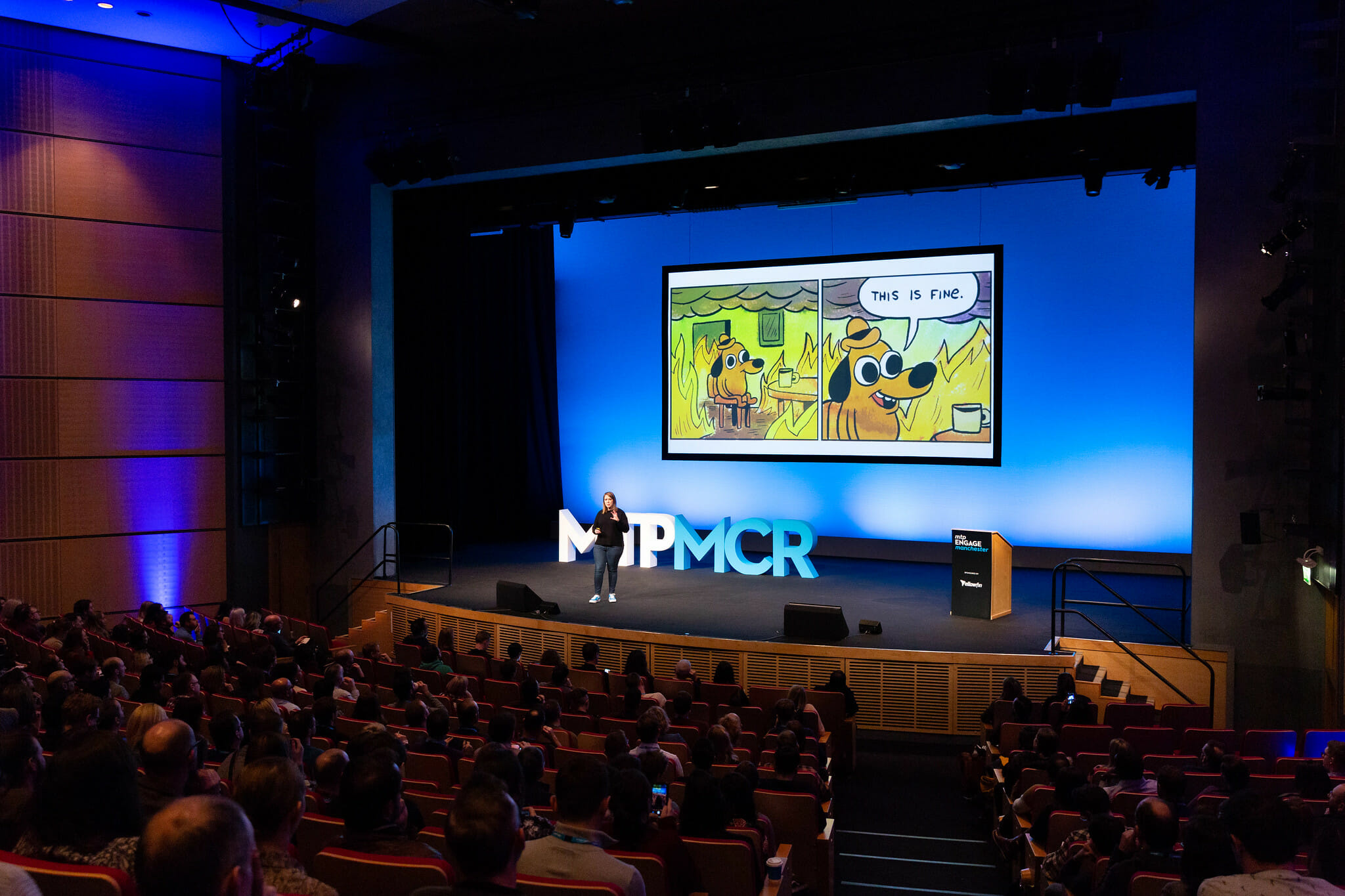Stuck in the Middle: Mastering Stakeholder Management by Emily Tate [Mind the Product]

In this MTP Engage Manchester talk, Mind the Product’s Chief of Staff, Emily Tate describes how, as product people, we often find ourselves stuck in the middle of difficult negotiations, and while making everyone happy isn’t our goal, mastering stakeholder management is key to building successful products.
Key Points:
- Stakeholders are your process users, they can become promoters or detractors
- Make goal alignment your priority
- Transparency builds trust
- Own your products and use evidence to support difficult decisions
Emily describes how, as a former product manager, she had many different stakeholders, but none were quite so great as Bob; Bob was the dream stakeholder, a certified promoter, who was always on side, endorsing new innovations and bold solutions. That was, until, it all went wrong.
With Bob’s encouragement, Emily’s team had researched their product, an app, and came to the conclusion that it needed to be rebuilt; fully reimagined.
But as they began to give Bob the good news, he quickly turned against them – Bob had built the original product and Bob was not happy. In that instant their key stakeholder became their biggest detractor, questioning the research and direction. He’d thought they were going to validate his work, while instead, Emily explains, they “called his baby ugly”.
 Threat Management
Threat Management
Emily describes how, as humans, we’re far more focused on threat than we are the potential of positive outcomes. Stress and threat detract from collaboration and inhibit our reasoning, problem-solving, and decision-making processes.
We feel stressed when one of the following is destabilised, attacked or questioned:
- Status
- Certainty
- Autonomy
- Relatedness
In each case, an adrenaline rush is triggered that’s equal to that experienced during a physically threatening situation. That’s what had happened to Bob.
Product management, Emily says, equals people management, and people management is hard. In order to avoid difficult situations with stakeholders we have to first work to better understand them.
Empowering Through Process
Emily defines stakeholders broadly as anyone you interact with, or anyone who wants to interact with your product – that means your entire company, as well as that person on Twitter sending you their problems.
A good way to start understanding your stakeholders is to view them as your users – your product is your process. Start by working to define your process of stakeholder management:
- ID stakeholders – start by identifying the Bobs, people who have a big impact and a temperamental nature
- Conduct interviews – spend time learning about who you’re working with, what they know, what they want (and don’t want) and then do the synthesis of your findings
- Communicate often – it’s key to fostering a good relationship that there’s transparency, clarity, and regularity
Now you have a solid understanding of your stakeholders you can start to align on your goals.
Every project needs clear and prioritised goals which means it’s vital to align on goals at the beginning of any large effort (or when you sense misalignment). Remember that transparency is a good thing. At this stage, it certainly helps to have stakeholders on your side, understanding your justification and even supporting it.
Everything is Fine
As Emily notes, at a certain point people can stop telling you the truth. Take the product scorecard for instance – it’s used to share week-by-week breakdowns of work ranked by colour, from green (good), to red (critical). Week one it’s all green (stakeholder visibility and reality), week three it’s still green for stakeholders, but things are moving to amber in product. By week five you’re showing your stakeholders a nice green sheet but there are fires left, right and centre.
 This is a good demonstration of how in product we can become tempted to hide things from stakeholders, telling ourselves it will all be okay in order to avoid difficult conversations with those more senior to us. Emily points out that these senior people are there to help, and even if they can’t, they’ll be furious if you continue to lie to them. Transparency builds trust.
This is a good demonstration of how in product we can become tempted to hide things from stakeholders, telling ourselves it will all be okay in order to avoid difficult conversations with those more senior to us. Emily points out that these senior people are there to help, and even if they can’t, they’ll be furious if you continue to lie to them. Transparency builds trust.
The Good, the Bad, and the Ugly
As a product person, negotiating with both products and people you have to own the good, the bad, and the ugly, it’s a part of this job. You need to learn which battles to pick and to know that you don’t have to win every battle the first time. Sometimes waiting to give a “no” is better if you’ve first accumulated several “yeses”. That said, some battles aren’t worth fighting at all if people get too angry to talk to.
Here’s how to handle that stakeholder‘s response:
- Exit the situation
- Ask yourself “why did they get angry?” and then keep asking the question
- Ask the stakeholder later to “help me understand why this upset you?”
- Let them defuse the situation
There’s also a fifth option. In the cases where there’s no chance of reasoning with the angry person, simply take care of yourself, you don’t deserve to be treated poorly at work.
 Conclusion
Conclusion
To close, Emily reminds us that stakeholders care about your products just as much as you do. You need to make sure you understand what they need – to feel safe to contribute and criticise (if necessary), to feel heard and understood. Be as transparent as you can and that way you’ll avoid causing others to feel threatened or turn to anger.
Building great products is a team sport and you need your stakeholders on your side. When it comes to it, strong stakeholder management can be the difference between being a good product manager and a great one.
Further reading
- How a Release Burn-up can do Some of Your Stakeholder Management
- Justify Your Product Decisions and Get Stakeholder Buy-in by Teresa Torres
- How to Make Product Decisions With Transparency and Trust
The post Stuck in the Middle: Mastering Stakeholder Management by Emily Tate appeared first on Mind the Product.
Source: Mind the Product https://www.mindtheproduct.com/stuck-in-the-middle-mastering-stakeholder-management-by-emily-tate/

Post a Comment